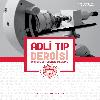Endişe verici bir madde: Bir prodrug olan 1,4-Bütandiol suistimali
Prodrug kavramı vücuda alımından sonra metabolize olarak farmakolojik olarak aktif hale geçen bileşiklere verilen isimdir. 1,4-bütandiol kimya, plastik ve tekstil sanayii gibi alanlarda yaygın kullanımı olan bir maddedir. Vücuda alındıktan sonra hızla psikoaktif etki gösteren Gama-Hidroksibütirat ’a dönüştüğünden dolayı “prodrug” lar için tipik örnektir. Son zamanlarda bu maddenin suiistimal edildiği adli dosyalar içerisinden görülmektedir. Maddenin psikoaktif etkileri ağızdan alımını takiben 5 ile 20 dakika içerisinde başlayıp yaklaşık olarak 2 ile 3 saat kadar sürmektedir. Oluşturduğu etkiler arasında öfori, erotik uyarılmalar, inhibisyon kaybı ve daha fazla tüketildiğinde sedatif etki sayılabilir. Bu makalede kendisi bizatihi psikoaktif bir etki doğurmayan 1,4-bütandiol’ün artan suiistimal potansiyelini ve yapılması gerekenleri ele almak amaçlanmıştır. 1,4-bütandiol Avrupa Birliği Kozmetik Maddeler mevzuatında, tehlikeli maddeler sınıfında yer almadığı gibi 1988 Uyuşturucu ve Psikotrop Maddelerin Kaçakçılığına Karşı Birleşmiş Milletler Sözleşmesi’nde, Birleşmiş Milletler prekürsör kimyasallar listesinde de bulunmamaktadır. Oysa bu maddenin metaboliti Gama-Hidroksibütirat 1971 psikotrop maddeler sözleşmesinin 2 nolu listesinde yer almaktadır. Günümüzde uyuşturucu tacirlerinin hukuki müeyyidelerden kaçmak amacı ile yeni yöntemler sergiledikleri görülmektedir. Bu nedenle Türk Ceza Kanunu’nun 188. maddesine ilave bir fıkra eklemek sureti ile ya da mevcut fıkralarda düzenleme yapılarak “prodrug” ların yasa kapsamına alınmasının önü açılmalıdır.
An alarming substance: Abuse of a prodrug, 1,4-Butanediol
A prodrug is a compound that, after administration, is metabolized and converted within the body into a pharmacologically active drug. 1,4-butanediol is widely used in industry such as chemical, plastics and textile. It is typical example of prodrugs, because of rapidly metabolized to psychoactive gamma-hydroxybutyrate after consumed. It is recently seen from our forensic case files that it is abused. After administered orally, its psychoactive effects start in 5 to 20 minutes, and last for approximately 2 to 3 hours. The actual effects are euphoric, erotic senses, loss of inhibitions and after a dose of 4 ml, it induces sedative effect. In this article, it is aimed to discuss the increasing abuse potential of 1,4-butanediol, which itself does not cause a psychoactive effect, and what needs to be done. 1,4- butanediol is not restricted under the European legislation on cosmetics, not classified as a dangerous substance, and it is not included in the tables of the 1988 UN Convention against Illicit Traffic in Narcotic Drugs and Psychotropic Substances. The chemical is not subject to the key UN convention that covers precursor chemicals; however, its metabolite, γ-hydroxybutyrate, is currently in Schedule II of the 1971 Convention. Today, it is seen that drug dealers exhibit new methods in order to escape from legal sanctions. For this reason, by adding an additional paragraph to Article 188 of the Turkish Penal Code or by making arrangements in the existing paragraphs, it should be possible to include “prodrugs” within the scope of the law.
___
- 1. Rautio J, Meanwell NA, Di L, Hageman MJ. The expanding role of prodrugs in contemporary drug design and development. Nature Reviews. Drug Discovery 2018;17(8):559-87.
- 2. Rautio J, Kumpulainen H, Heimbach T, Oliyai R, , Järvinen D Savolainen T. Prodrugs: design and clinical applications. J.Nat Rev Drug Discov 2008;7(3):255-70.
- 3. Sprince H, Josephs Jr JA, Wilpizeski CR. Neuropharmacological effects of 1,4-butanediol and related congeners compared with those of Gama Hidroksibütirat and gamma-butyrolactone. Life Sciences 1966;5:2041-52.
- 4. The Merck Index: An Encyclopedia of Chemicals, Drugs, and Biologicals., 13 th. Edition. MerckCo.,Inc., NJ. 2001.
- 5. World Health Organization. 1,4-Butanediol (1,4-BD) Pre-Review Report: Expert Committee on Drug Dependence Thirty-fifth Meeting. Geneva: World Health Organization; 2012. Report No.: 35th ECDD (2012) Agenda item 5.5.
- 6. World Health Organization. 1,4-Butanediol (1,4-BD) Critical Review Report: Expert Committee on Drug Dependence Thirtysixth Meeting. Geneva:16-20 June, World Health Organization; 2014. Report No.: 36th ECDD (2014) Agenda item 4.4).
- 7. https://psychonautwiki.org/wiki/1,4-Butanediol (Cited: 15 August 2021).
- 8. Thai D, Dyer JE, Jacop P, Haller CA. Clinical pharmacology of 1,4 butanediol and gamma –hydroxybutyrate after oral 1,4 butanediol administration to healty volunteers. Clin Pharmacol Ther 2007;81(2):178-84.
- 9. Poldrugo F, Snead OC. 1,4 butanediol, Ɣ-hydroxybutyric acid and ethanol: Relationships and interections. Neuropharmacology 1984;59(23):109-13.
- 10. https://www.who.int/medicines/areas/quality_safety/4_4_ Review.pdf (Cited: 15 August 2021)
- 11. Schep LJ, Knudsen K, Slaughter RJ, Vale JA, Mégarbane B. The clinical toxicology of γ-hydroxybutyrate, γ-butyrolactone and 1,4-butanediol. Clin Toxicol (Phila) 2012;50(6):458-70.
- 12. Zvosec DL, Smith SW, McCutcheon JR, Spillane J, Hall BJ, Peacock EA. Adverse events, including death, associated with the use of 1,4-butanediol. N Engl J Med 2001;344:87-94.
- 13. Palmer RB. Gamma-butyrolactone and 1,4-butanediol: Abused analogues of gamma-hydroxybutyrate. Toxicol Rev 2004;23:21-31.
- ISSN: 1018-5275
- Başlangıç: 1985
- Yayıncı: BAYT Yayıncılık
